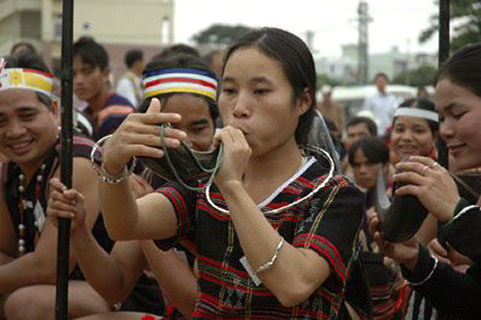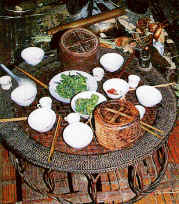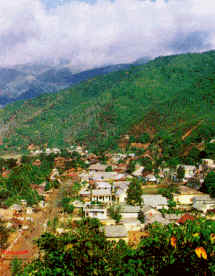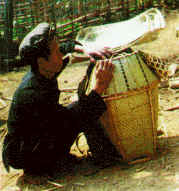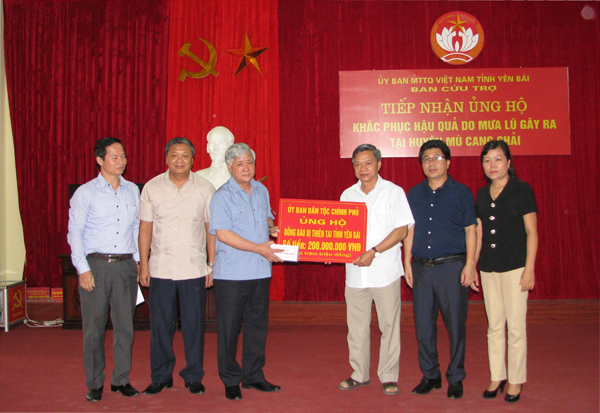The Mang have more than 2,200 inhabitants occupying some communes of four districts of Sin Ho. Muong Te, Phong Tho and Muong Lay of Lai Chau province. The Mang have other names such as Mang U and Xa La Vang.
The Mang practice cultivation on burnt-over land. Maize and rice are their staple food. They use slash-and-burn techniques with rudimentary home-made tools such as axes to fell trees, long knives to cut branches and sticks to dig holes. Nowadays, in some places, the Mang cultivate rice in terraced fields in the Thai manner. The Mang rear pigs and poultry to provide food and offerings to the rites and ceremonies. They also rear a few of cattle and horses. Basketry is a rising sideline occupation to make articles for their use and to sell or exchange rice and cloth.
In the past, the Mang inhabited according to the lineages. Each lineage settled in a separate area.
The chief of the village, together with the council of the oldest men, takes full responsibility for his group's affairs. The Mang live in houses-on-stilts. Male garments comprise a short vest open at the front and trousers. Women wear a long skirt. short vest open at the front and a' piece of white cloth decorated with various motifs.
Young Mang men and women are free to choose their own partners. The man's family proposes marriage. According to custom, a sham struggle between the two families is organized to seize the bride on the day when the bride is brought from her family.
In the Mang's cosmogonic concepts, the heaven is the Creator who reigns supreme. The uppermost is the country of genies; the earth is the country of human beings and the under ground is the country of demons.
Though they are under the influences of the Thai, Ha Nhi and Mong, the Mang have kept their peculiar cultural identity. The Mang language belongs to the Mon-Khmer Group, They have certain habits and customs. The chin-tattooing, the rite for mature men and folksongs manifest their long-standing culture.

